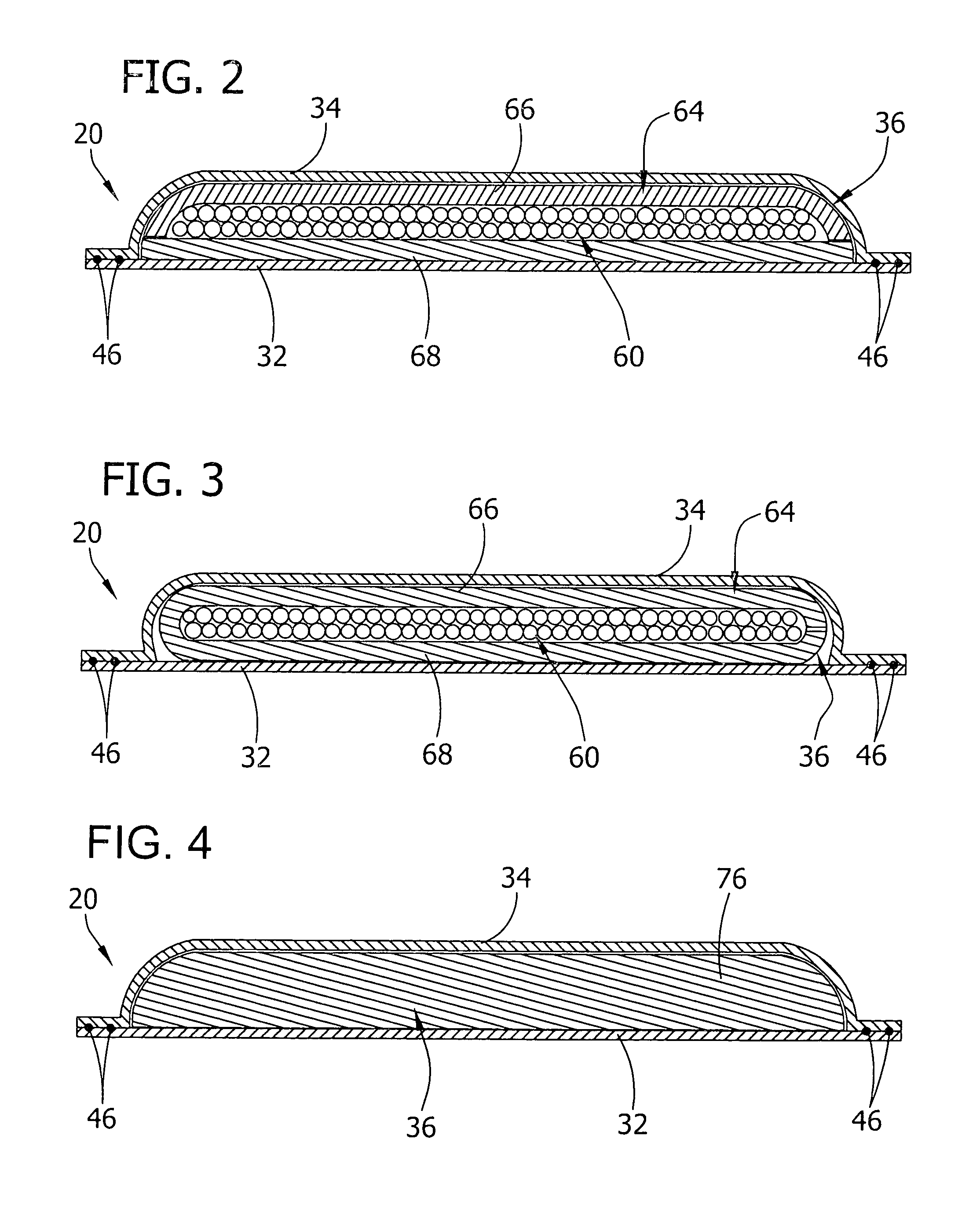Evaporative disposable garment
a technology of disposable garments and evaporation, which is applied in the field of disposable garments, can solve the problems of premature leakage, poor fit, and increased weight and bulk of garments, and achieve the effects of reducing the risk of bacterial infection, reducing and improving the resistance of bacterial infection
- Summary
- Abstract
- Description
- Claims
- Application Information
AI Technical Summary
Problems solved by technology
Method used
Image
Examples
experiment 1
[0070] A first test was conducted to determine the evaporation rates of nine different absorbent body constructions. Specimen 1 was a control specimen representative of a prior art absorbent body construction comprising 43% by weight HYSORB 8800 superabsorbent material available from BASF Corporation of Charlotte, N.C. and 57% by weight Bowater CR-1654 wood pulp available from Bowater Incorporated of Greenville, S.C. This sample represents the absorbent body construction of absorbent bodies found in HUGGIES SUPREME diapers available from Kimberly-Clark Worldwide, Inc. of Neenah, Wis.
[0071] Specimen 2 was a 3.5 ounces per square yard (osy) (119 grams per square meter (gsm)) Through Air Bonded Carded Web (TABCW) material commonly used as surge layer material on conventional diapers such as diapers manufactured by Kimberly-Clark Worldwide, Inc. of Neenah, Wis. under aforementioned U.S. Pat. No. 5,562,650.
[0072] Specimen 3 was a layer of HYSORB 8800 superabsorbent material available f...
experiment 2
[0079] A second test was conducted to determine the effect that various outer cover materials have on evaporation rate. For each outer cover material to be tested, the Evaporation Rate Test was conducted using the TABCW surge material set forth in Specimen 2 of Experiment 1. The specimen of the outer cover being tested was sized to completely cover the absorbent sample and extend beyond the edge of the absorbent sample by at least one inch (2.54 cm) on each side of the absorbent sample. The particular outer cover specimens tested were all 6 inches (15.2 cm) by 6 inches (15.2 cm). The specimen was placed over (in direct contact therewith) a saturated 2 inch (5.1 cm) by 2 inch (5.1 cm) sample of 3.5 osy (119 gsm) surge layer material, identical to the material of Sample 2 in Experiment 1, on the hot plate for the duration of the Evaporation Rate Test. The various materials tested included the following:
[0080] Specimen 1 was a microporous film / nonwoven laminate comprising a spunbond n...
experiment 3
[0091] A third test was conducted to determine the evaporation rates of various specimens comprises of a combination of an absorbent body specimen and an outer cover material specimen.
[0092] A total of six combinations were tested.
[0093] Specimen 1 was a control sample comprising the absorbent body of Specimen 1 of Experiment 1 and the outer cover material of Specimen 1 of Experiment 2. This specimen represents the absorbent body and outer cover construction used in HUGGIES SUPREME diapers currently available from Kimberly-Clark Worldwide, Inc. of Neenah, Wis.
[0094] Specimen 2 comprised the absorbent body of Specimen 6 of Experiment 1 and the outer cover material of Specimen 3 of Experiment 2.
[0095] Specimen 3 comprised the absorbent body of Specimen 7 of Experiment 1 and the outer cover material of Specimen 3 of Experiment 2.
[0096] Specimen 4 comprised the absorbent body of Specimen 9 of Experiment 1 and the outer cover material of Specimen 3 of Experiment 2.
[0097] Specimen 5...
PUM
| Property | Measurement | Unit |
|---|---|---|
| density | aaaaa | aaaaa |
| density | aaaaa | aaaaa |
| particle size | aaaaa | aaaaa |
Abstract
Description
Claims
Application Information
 Login to View More
Login to View More - R&D
- Intellectual Property
- Life Sciences
- Materials
- Tech Scout
- Unparalleled Data Quality
- Higher Quality Content
- 60% Fewer Hallucinations
Browse by: Latest US Patents, China's latest patents, Technical Efficacy Thesaurus, Application Domain, Technology Topic, Popular Technical Reports.
© 2025 PatSnap. All rights reserved.Legal|Privacy policy|Modern Slavery Act Transparency Statement|Sitemap|About US| Contact US: help@patsnap.com



